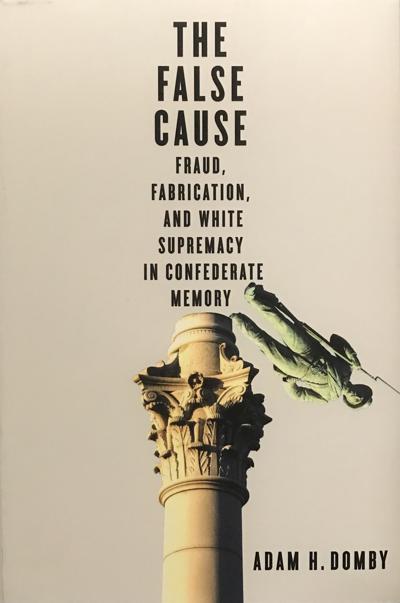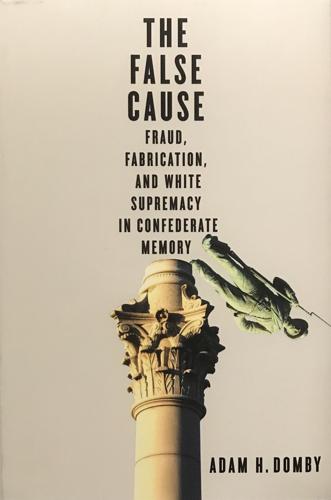THE FALSE CAUSE: Fraud, Fabrication, and White Supremacy in Confederate Memory. By Adam Domby. University of Virginia Press. 272 pages. $29.95.
In the acknowledgments to his timely new book, Adam Domby explains that it was only due to a flood that the book began at all. When he arrived at the North Carolina State Archives to do some research, he was told the room he needed to access was filled with standing water. Unsure what to do next, Domby remembered an old historic lead that he meant to follow.
He relocated to another section of the archives to look into an incident of Confederate pension fraud. What he found was only the tip of the iceberg. Domby, a professor of history at the College of Charleston, uncovered instances of fraud and fabrication woven together to create a false narrative that ennobled the Confederacy in Southern popular memory and enshrined white supremacy in its political culture.
The sense of discovery that Domby shares in the acknowledgments animates the book. Not only does he provide readers with fascinating historical anecdotes throughout the book, he clearly relates them to the present moment. In so doing, he offers the helpful distinction between history and historical memory.
History, he recounts, is the careful reconstruction of events by historians relying on the evidence and records. Historical memory, however, is the story that is collectively adopted and passed down over generations.
Put another way, history is investigative and historical memory is interpretive. Domby’s book moves deftly between the two as he tells the story of how White Southerners purposefully shaped historical memory in order to soften the horrors of slavery, shift responsibility for their sedition, and secure White political power in response to Reconstruction Era efforts at creating a multiracial democracy.
Novelist Viet Thanh Nguyen reminds us that all wars are fought twice. “The first time on the battlefield,” he says, “(and) the second time in memory.” Domby’s book provides a helpful guide through White Southern memory, a place where the Civil War never really ended. Using the state of North Carolina as a case study, he explains how Confederate statues were erected after Reconstruction as a way of reasserting white supremacy, literally putting White power on pedestals outside courthouses, on campuses, and in city squares.
Some may dispute Domby’s claim that the monuments were white supremacist, but he simply refers to the historical record for irrefutable evidence. Particularly damning is a speech given by Julian Carr at the dedication of the Confederate monument “Silent Sam” at the University of North Carolina in 1913. In his remarks, Carr boasted of physically attacking and whipping a Black woman “until her skirt hung in shreds.” Carr’s words were remembered in 2019 when students gathered in protest of “Silent Sam” before pulling it down.
Domby shares much of Julian Carr’s story throughout the book, places him in context next to other ex-Confederates, and shows how normative his views were among White public officials at the time. The fact that the “Silent Sam” statue has only recently been removed, and that the University of North Carolina still has not decided what to do with it, underscores how unresolved our history is; the battles of memory rage on.
Domby is no stranger to the fight. His book is especially good at showing how memories were constructed and the myth of the noble Confederacy was born and perpetuated. He takes readers through the false claims that the Civil War wasn’t fought over slavery, Confederate soldiers were unusually valiant and enslaved people were happy with their condition, each one of which is a dangerous recasting of historical memory to support the entrenchment of a white supremacist power structure.
Along the way, Domby offers enlightening histories of White Southern deserters, dissenters, and Union sympathizers which puncture fabricated historical memories with compelling counterexamples. Many of these stories are untold; most of them have never been memorialized. Yet their bearing on us today could hardly be more relevant.
As Domby reminds us, “The fights over the nation’s commemorative landscape mirror contemporaneous battles for control of the political landscape.” In this sense, the struggle has never really been about the statues and it may have only just begun.
Domby knows that what we are really trying to dismantle is the idea of white supremacy itself and the system of racial privilege that it supports. This, he shares, is one of the reasons he wrote “The False Cause.” He realizes the power of stories to shape our actions and activism in creating a multiracial democracy. His book is an invaluable resource for the struggle.








